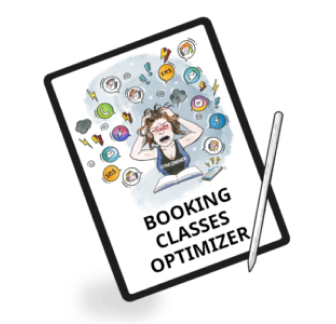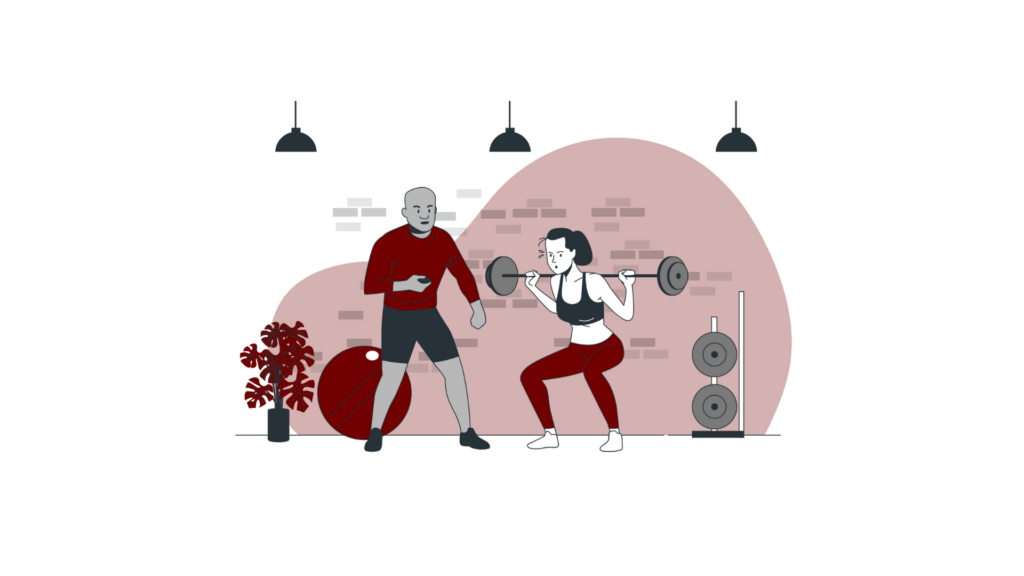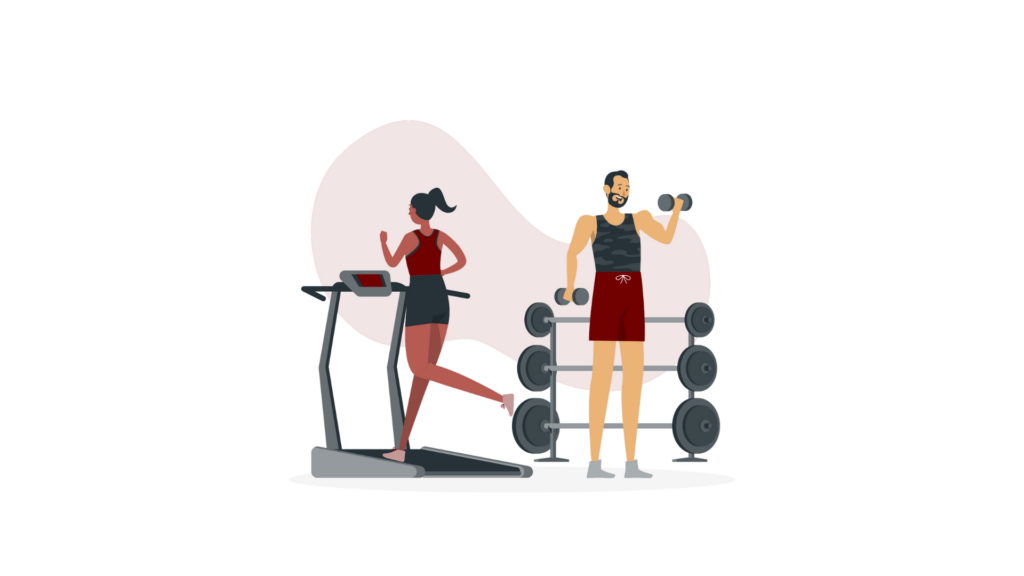If you run your fitness business you surely want to earn money. Your company has a commercial intention, right? Does it mean that every gym owner runs a commercial gym? Jeez, what is a commercial gym actually?
Commercial gym versus private gym. Wait! There are also public gyms in the surroundings of fitness enthusiasts. You can get a bit confused.
This article is here to help you understand what commercial gyms are and provide valuable tips for success in running one.

Key Takeaways
- Commercial gyms, compared to a private gym, are larger, membership-based, and open to the public, often offering a variety of equipment and services. Private gyms, on the other hand, are usually smaller, more exclusive, and may provide more personalized attention.
- If you want to run a successful commercial gym, focus on providing a great customer experience, offering diverse fitness programs, maintaining quality equipment, and using a gym management system that reduces administrative mess and overcrowding.
- Successful commercial gyms optimize their pricing strategy, invest in effective gym marketing, and manage your finances carefully to ensure long-term growth and profitability.
What Is a Commercial Gym?
A commercial gym is a large fitness center that operates as a business, offering memberships to the public. These gyms usually have lots of equipment, classes, and sometimes extra services like personal training. They are sometimes open 24/7 and focus on providing affordable and convenient fitness options, but may have less personal attention or high-end equipment compared to smaller, private gyms.
The Idea of Commercial Gyms

A commercial gym is a fitness facility that is open to the public for a fee, often with memberships or pay-as-you-go options.
These gyms are typically equipped with a variety of workout equipment, such as free weights, cardio machines, resistance machines, and sometimes even group fitness classes, personal trainers, and amenities like saunas or swimming pools. The goal is to offer a place where people can work out, improve their fitness, and access various training resources.
Commercial gyms often operate on a larger scale compared to smaller, specialized fitness centers and can cater to a wide range of fitness levels and goals.
To sum up, commercial gyms are:
- Large-scale fitness centers: often with unlimited membership capacity, focusing on maximizing revenue.
- Using fitness equipment that may be more general: the equipment is not always top-tier, aimed at attracting a wide range of users.
- Commercial gyms are, for example: 24 hours gyms, chains, and mass-market fitness centers.

Commercial Gyms vs. Private and Public Gyms
Due to some confusion in nomenclature, we would like to clarify the terms for the different types of gyms in the fitness industry.

Private Gym:
- Exclusive membership limits, high-quality fitness equipment, more personalized service, intimate atmosphere.
- Targets clients seeking specialized fitness experiences.
- Example: boutique fitness studios.
Public Gym:
- Funded by local authorities or municipalities, often free or low-cost, with basic equipment.
- Aimed at providing affordable fitness options for the general public.
Pros and Cons of Commercial Gyms
Commercial gyms, like any type of fitness business, have their pros and cons. Let’s see what they are and immediately think about solutions to problematic situations.

Pros of Commercial Gyms
There are many positive sides of commercial gyms for both members and gym owners.
For members, they provide a convenient and accessible space to reach fitness goals. Gyms offer a diverse range of fitness equipment and classes. They also create a community atmosphere.
For gym owners, commercial gyms generate steady revenue streams. They also offer opportunities for growth and expansion.

Positive sides of commercial gyms:
- Convenience: Open 24/7 in many cases, flexible membership options.
- Accessibility: Affordable and scalable for large numbers of people.
- Variety of services: Classes, equipment, and amenities for all fitness levels.
Cons of Commercial Gyms
There are also some downsides to commercial gyms. For members, gyms can become overcrowded during peak hours, which limits access to equipment. Membership fees can be expensive, especially if members don’t use the gym regularly. Some people might feel intimidated or self-conscious in a busy, public space.
For gym owners, maintenance costs can be high, as equipment and facilities need regular care. There is also competition with other gyms, making it challenging to retain members.

Negative sides of commercial gyms:
- Crowded during peak hours, leading to long wait times for equipment.
- Equipment may be lower-quality or outdated due to the focus on profit over quality.
- Less personalized attention and support for clients.
Tips to Minimize Cons of Commercial Gyms
- Invest in gym management software
Gym management software can streamline operations, making it easier for members to book classes, schedule personal training, and manage memberships. This can help reduce overcrowding by allowing gym owners to track busiest gym times and ensure equipment is used efficiently.
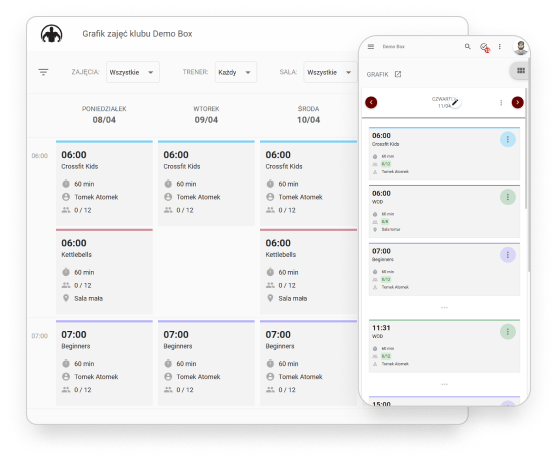
Manage your gym
like a pro
Get more online bookings and increase your gym profit
- Encourage clients to visit during off-peak hours By offering incentives or discounts for attending during least busy gym times, gyms can spread out member traffic and reduce overcrowding. Members who avoid peak hours will have a more pleasant, less stressful experience, while the gym will be able to operate more smoothly and efficiently.
- Invest in premium memberships that offer exclusive areas or services Offering premium memberships with exclusive access to certain areas, such as VIP zones, or additional services like priority booking for classes, can help ease overcrowding. This creates a more personalized experience for members who are willing to pay extra for a less crowded and more comfortable gym visit.
- Rotate equipment regularly and invest in periodic upgrades Regularly rotating your gym equipment list helps keep the gym feeling fresh and ensures that members can access a variety of training tools. Investing in upgrades or new machines also prevents equipment from becoming outdated, ensuring that members always have access to high-quality gear. This helps maintain member satisfaction and encourages them to return consistently.
Equipment in Commercial Gyms
Let’s take a look at the subject of equipment in commercial gyms. Is it only good for beginner fitness enthusiasts? Or will advanced users find something for themselves as well?

Overview of Typical Equipment in Commercial Gyms
- Basic machines, cardio equipment, free weights, and multi-functional stations.
- Some commercial gyms may offer more specialized machines depending on the size and focus.
- Some commercial gyms also offer additional amenities, such as swimming pools, saunas, steam rooms, massage services, smoothie bars, and childcare facilities. These extras enhance the overall experience, making the gym not only a place for fitness but also a relaxing and convenient environment for members to unwind and take care of themselves. Yet, this is rather an exception to the rule…
Difference in Equipment Quality
While private gyms offer higher-end, niche equipment, commercial gyms often focus on quantity over quality to serve a broad audience.
Benefits of Opening a Franchise Commercial Gym
Franchising in the fitness industry offers gym owners the chance to tap into an established brand, which helps attract members quickly. The model provided by top fitness franchises significantly reduces the risks associated with starting a gym from scratch. They assure a proven business structure, training, and ongoing support.
Maybe not most commercial gyms, but a significant part of them, operate actually in a franchise model.
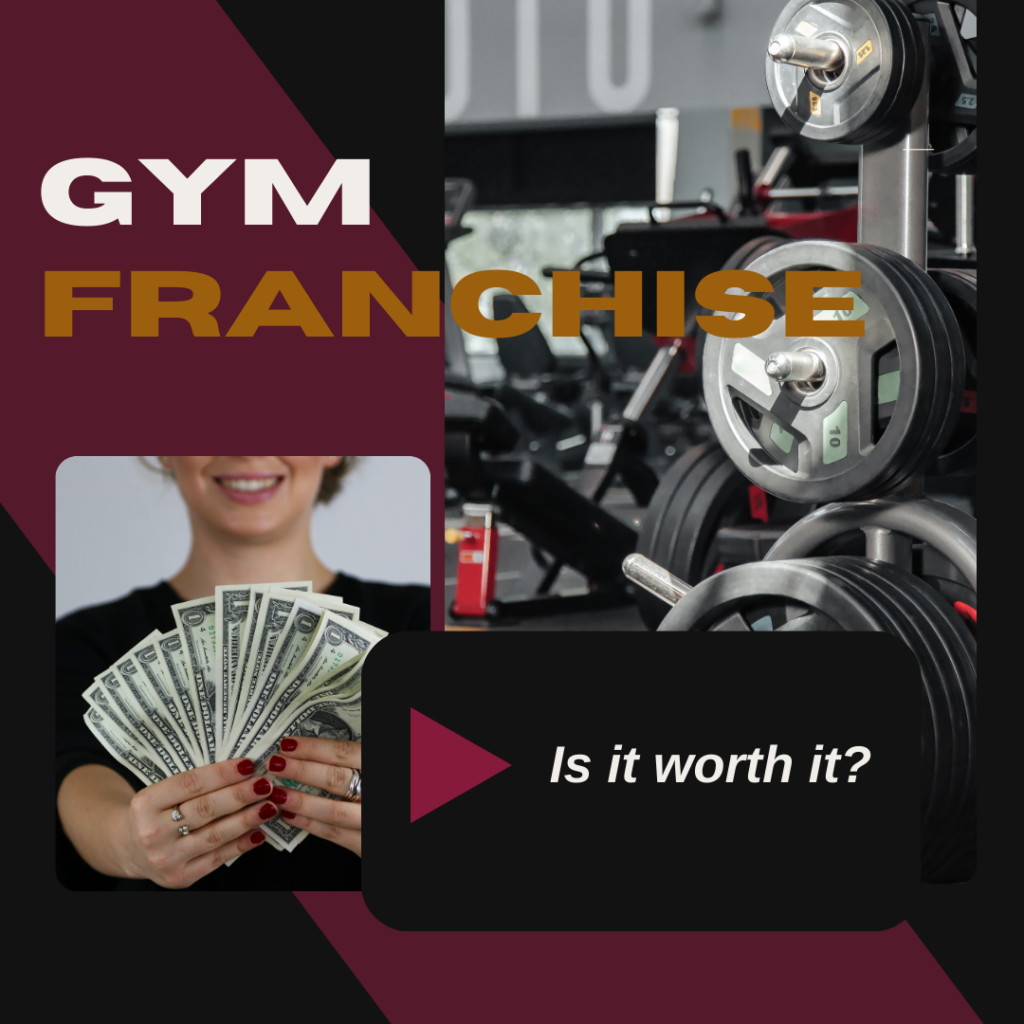
Advantages of Gym Franchises
- Established Brand Recognition: Franchise gyms benefit from name recognition, drawing in customers who already trust the brand.
- Proven Business Model: The franchise provides a ready-made business plan, reducing the chances of failure.
- Training & Support: Owners receive comprehensive training and ongoing support, helping them handle operations, marketing, and customer service.
Popular Gym Franchises
- Anytime Fitness: 24/7 access for members, convenient for various schedules.
- Gold’s Gym: A legendary brand known for bodybuilding and fitness.
- Snap Fitness: Focused on efficient workouts for busy individuals.
- F45: High-intensity group training classes.
- Planet Fitness: Welcoming, judgment-free environment for beginners. Read more about Planet Fitness business model.
Marketing Power & Brand Recognition
Opening a franchise means instant access to the brand’s marketing resources. Franchisees benefit from:
- National Advertising: Corporate campaigns that bring awareness and attract new members.
- Local Marketing Support: Assistance in customizing promotions for specific areas.
5 Tips for Running Commercial Gyms Successfully
Running a commercial gym requires good planning and efficient management. Here are 5 tips for you on how to become one of the successful gym owners.

Tip 1. Implement Gym Management Software
Use gym software to streamline gym operations and improve member experience. In case of commercial gyms, this SaaS solution is essential for managing registration and avoiding crowds, which will have a positive impact on the customer experience in reaching their fitness goals.
Key features of the software:
- Gym Booking System: Allows members to book classes and sessions easily.
- Member Management: Tracks memberships, payments, and attendance.
- Marketing Tools: Automates promotional campaigns, social media scheduling, and email newsletters.
- Gym POS System: Simplifies the payment process for memberships, classes, and retail items.

Manage your gym
like a pro
Get more online bookings and increase your gym profit
Tip 2. Focus on Customer Experience and Retention
Offer personalized services like fitness assessments, one-on-one training, personal training services, or group sessions to help members feel supported in achieving their goals. This is how you can grow your gym membership retention.
Building a community atmosphere through gym events, challenges, and social media engagement creates a sense of belonging, encouraging members to stay loyal and motivated to continue their fitness journey with your gym.
Tip 3. Optimize Your Pricing Strategy
Many commercial gyms are quite rigid in their pricing ideas. In order to stand out, offer flexible membership options, such as monthly, annual, or pay-as-you-go plans. Cater to different budgets and preferences, ensuring that your gym is accessible to a wider range of potential members.
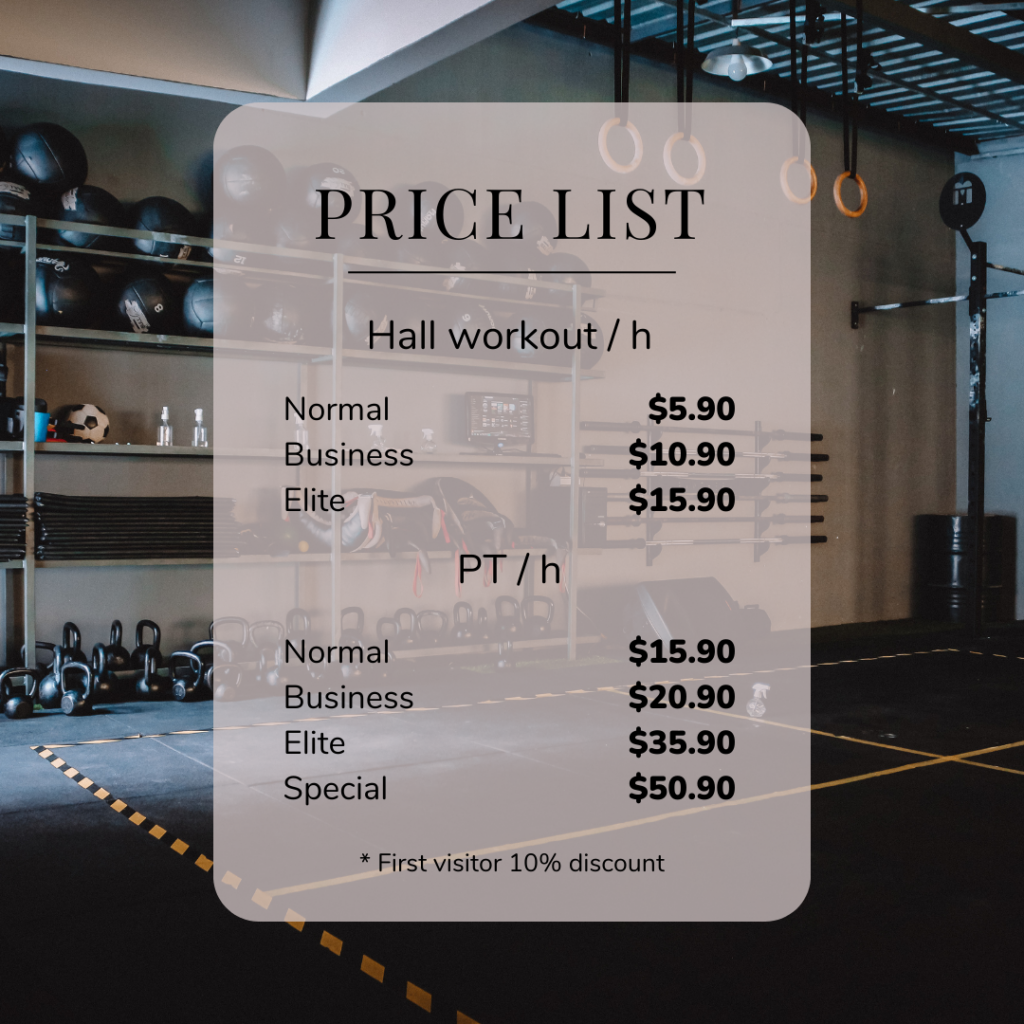
Additionally, providing discounts, referral bonuses, or loyalty rewards can incentivize current members to spread the word and bring in new clients, while also fostering a sense of value and appreciation.
By fine-tuning your gym pricing strategy, you can maximize both member acquisition and retention.
Tip 4. Regularly Maintain Equipment and Facilities
Schedule routine maintenance and replace outdated equipment. Keep the gym clean and well-organized to enhance the overall experience for members. Do you need a gym cleaning checklist to make your work more efficient? download it from our other article!
Tip 5. Foster a Strong Brand Identity
Ensure your gym has a clear, consistent brand message that resonates with your target audience. Invest in marketing campaigns that emphasize your gym’s unique selling points, such as convenience, specialization, or community-focused offerings.
Summary
- Now you know the key differences between commercial, private, and public gyms.
- Remember about the importance of understanding the dynamics of a commercial gym for success in the fitness business.
- Feel encouraged to adopt the tips and tools provided to improve your gym operations.

FAQ
A commercial gym is a fitness company that operates as a business and offers memberships to the public. These gyms typically feature a wide variety of equipment, classes, and occasionally additional services like personal training. Many are open 24/7, prioritizing convenience and affordability for members. However, they may offer less personalized attention or more basic equipment compared to smaller, private gyms.
A commercial gym’s profit can vary widely, typically ranging from 10% to 30% profit margins. On average, small to medium-sized gyms can make between $50,000 to $500,000+ annually, depending on factors like membership fees, location, and additional services (e.g., personal training). Operating costs such as rent, equipment, and staff salaries also affect overall profitability.
A gym is considered commercial if it operates as a for-profit business, offering memberships or pay-per-use access to the public. It typically has a large scale, a variety of equipment, and may offer additional services like personal training or group classes to generate revenue.


